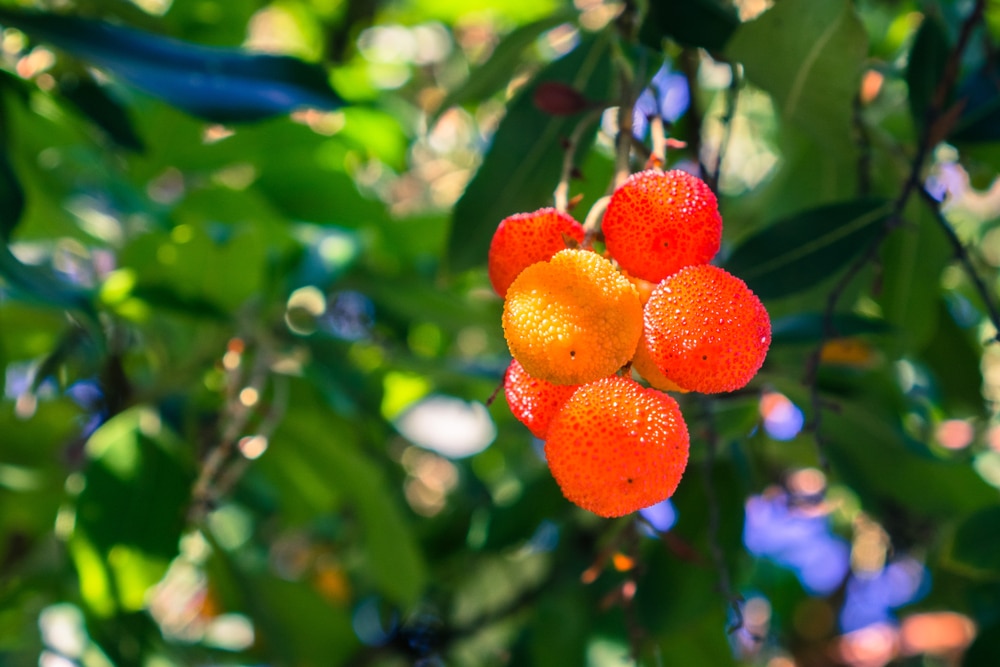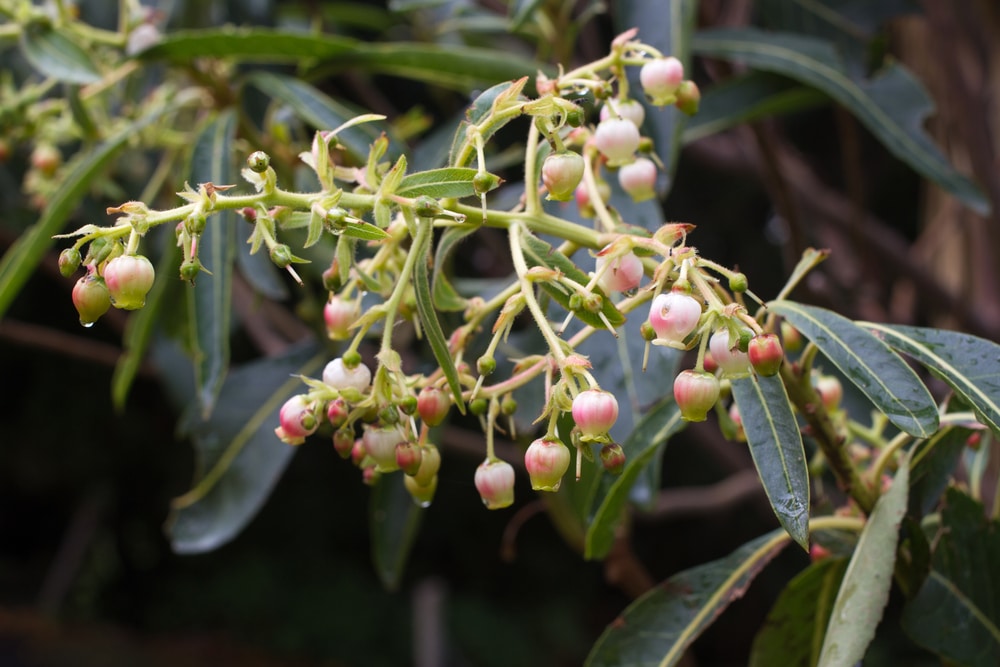Growing strawberry bushes is easy, but what about strawberry trees? In this article, we’ll discuss the five most important factors in caring for Arbutus Marina Strawberry trees.
| Botanical Name | Arbutus unedo |
| Common Name | Marina strawberry tree |
| Plant Type | Perennial |
| Flower Color | Rosy pink and white |
| Size When Mature | Up to 600 inches |
| Bloom Time | Year-round |
| Sun Requirements | Full/ Partial Sun |
| USDA Hardiness Zones | 8-10 |
| Soil PH Range | 4 to 6.5 |
| Soil Type | Well-draining, sand and clay mix |
| Water Needs | Medium |
| Native Area | Southwestern Europe & the Mediterranean |
What You Need To Know About the Marina Strawberry Tree
The Marina strawberry tree is a medium-sized shrub-like tree with low-hanging green leaves. It grows any height between 25 and 50 feet tall. This tree blooms light pink flowers all year long, and in the fall, it bears red and yellow fruit. This fruit resembles a large and round berry with a textured exterior. You may eat this fruit, but it will not taste like a strawberry. It has a subtler flavor with a gritty texture.
Its origin is unclear, but this tree is the likely result of crossbreeding different kinds of Arbutus species. As a culmination of several types of trees, the Marina strawberry tree is adaptable and easy to grow in gardens across the United States.
How To Care for a Marina Strawberry Tree
Here’s everything you need to know about growing and caring for a thriving Arbutus Marina strawberry tree.
Light
The Marina strawberry tree loves sunshine! Plant this tree in any area of your yard or garden that gets full sun with minimal shade. It needs at least four hours of direct sunlight every day to maintain optimal health. Ideally, this tree needs closer to six hours of unfiltered sun each day.
Full-sun plants like the Marina strawberry tree will not survive without the necessary sunlight. Growing this tree in shaded conditions does not ensure exceptional growth. Plants use sunlight as fuel to conduct photosynthesis. A lack of sun starves and weakens your plant.
Water and Soil Needs
Marina strawberry trees need well-aerated soil for proper water drainage. Most common soils will work adequately, but the best option is a mixture of several types, like sand, clay, and other sediments. When planting, keep the tree’s crown (branches and leaves) exposed, ensuring it does not rot.
Water your strawberry tree about once a week. Saturate the surrounding soil, but do not over-water. Soil quality should help drain any excess water, avoiding potential problems such as root rot. If you are concerned about drainage, try adding mulch to your soil.
Temperature Requirements
Strawberry trees grow best in USDA climate zones 8 through 10. These zones include most Southern and Southwest areas of the United States. Strawberry trees thrive in these areas because of the warm and sunny climate.
Fertilizer
The best fertilizer to use on a strawberry tree is any organic compost.
Saplings especially benefit from minerals like phosphorus because they use it alongside sunlight for growth. Use fertilizers with extra phosphorus for a nutritional boost. Most home and garden centers provide excellent fertilizer options. Follow the directions on the bag when planting for the best results.
Common Diseases
Generally, the Marina strawberry tree is robust and not usually the target of insects and disease. However, some Arbutus species, such as this one, have issues with patches of rotting branches and leaves. The Botryosphaeria fungus causes this problem.
When caught early, this disease does not typically cause much harm because this prevents any new growth from infection. Prune and remove any impacted areas of the tree as quickly as possible. Prune the tree carefully, not inducing added stress onto the plant.
Marina Strawberry Tree Propagation
You can easily propagate a Arbutus Marina Strawberry tree from its seeds. Take a ripe seed and plant it in a pot with nutrient-rich soil. Mature seeds are hard and darker and color, while unripe seeds are soft and usually green or white. You can soak unripe seeds in warm water for about a week and propagate them, too.

